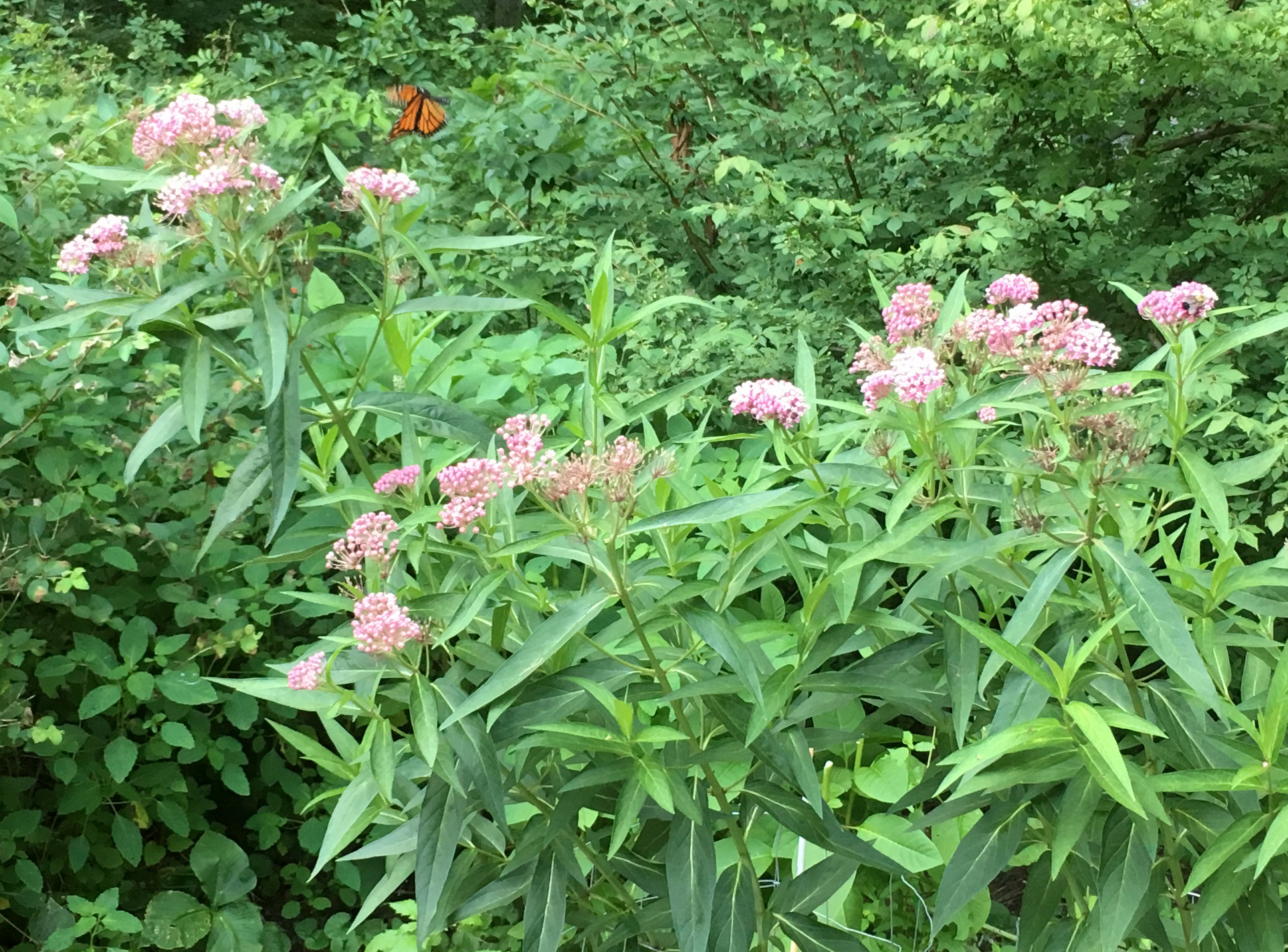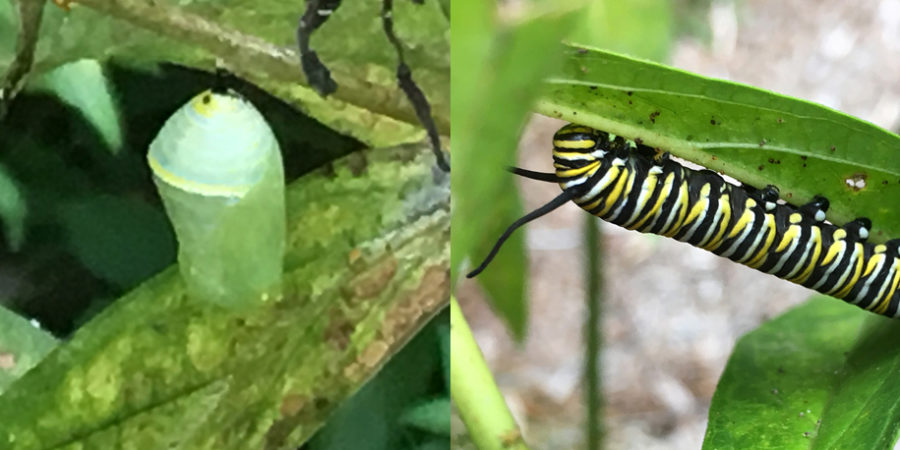We spot it, about an eighth of an inch long, motionless on the narrow green leaf. The white, yellow and black rings make it easy to identify, even at this size. It’s what we’ve anxiously been waiting to see since last fall. A Monarch Butterfly caterpillar is on one of our two Swamp Milkweed plants.
Over the past few decades the Monarch Butterfly has been declining, mostly due to the loss of habitat. Specifically, the reduction of the only type of plant on which the Monarch will lay her eggs and the caterpillar will feed — the milkweed. The milkweed is poisonous to humans and some animals, but not to the Monarch.
Recently, Monarchs have made a comeback as people become aware of their plight and try to help. Many have started to plant milkweeds in their yards and others have begun to raise Monarchs. We visited a nursery this summer for a Monarch presentation, and they had over 50 chrysalises in their Monarch hatchery.
Two years ago my wife suggested we devote a section of our backyard to helping the Monarch. After doing some research, I planted two Swamp Milkweeds towards the back of our yard. I chose the Swamp Milkweed because it’s a Monarch favorite, it’s one of the most attractive milkweeds with pinkish flowers and thinner, greener leaves than the common milkweed, and is hardy enough for our 5-6 region.
FACT: Last year, two apparel companies created what they are calling the world’s first insulated jacket using the floss from milkweed. The floss is the fluffy white material that is attached to each milkweed seed.
That following spring I kept my fingers crossed hoping the milkweeds would survive the winter. For weeks I saw other plants breaking through the mulch in that part of the garden but no sign of the milkweed. Finally they appeared, and continued to grow at a fast pace throughout the early summer.
Shortly after the first blooms opened that we spotted a Monarch going from flower to flower on the milkweeds. Towards the end of June we spotted the first Monarch caterpillar. We looked closer at the plant and found nine others of various sizes. Quite a surprise for our first year.

Diversity Of Insects
Equally surprising was the diverse kinds of bees and butterflies that would be attracted to these milkweeds. On a daily basis the milkweeds were covered with a variety of bees, including Honeybees, which are not common in our yard. In fact, milkweeds drew more insects than any other plant including our violet flowering Bee Balm which, before this, had been the favorite in our garden. Who would have expected that these poisonous plants would turn out to be the one of the greatest stars in our garden.
As the summer moved on, all ten caterpillars grew to maturity and one actually formed its chrysalis on the milkweed plant. One morning, a couple of weeks later, I noticed the chrysalis appeared darker. That afternoon it hatched, leaving the empty casing that once housed it.
With a little effort, we can continue to see and enjoy Monarch Butterflies in our garden. It’s not hard, or costly, and a small area can produce many butterflies. So do the Monarch, and your garden, a favor. Plant a milkweed — or two.
OBSERVATION: I planted Common Milkweed seeds (that I confiscated from a golf course) that same fall in the area of the Swamp Milkweeds but not one propagated. Upon research I found that very few seeds from wild plants ever actually take and become milkweeds. It’s why the milkweed produces so many seeds.
